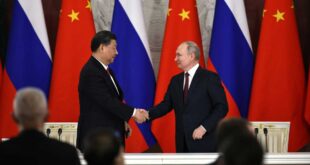On April 2, 2025, the United States under President Donald Trump unveiled a sweeping tariff policy, instituting a baseline 10% levy on all imports, with select nations subjected to markedly higher rates. Pakistan, a longstanding ally, now confronts a staggering 29% tariff on its exports to the US—a move that has sent shockwaves through diplomatic and economic circles. This decision risks destabilizing a multifaceted partnership rooted in shared security objectives, economic interdependence, and geopolitical collaboration. The ramifications extend beyond commerce, threatening to erode decades of trust and mutual investment in regional stability.
The US-Pakistan relationship has historically transcended mere transactional exchanges. Since the Cold War, Pakistan has served as a pivotal ally in counterterrorism, intelligence-sharing, and regional security, particularly following 9/11. The country’s sacrifices in combating extremism—including significant military casualties and economic losses—have been acknowledged as critical to global counterterrorism efforts. Beyond security, bilateral trade has flourished, with Pakistan emerging as a key supplier of textiles, IT services, and medical equipment to the US. In 2023 alone, Pakistani textile exports to the US totaled $3.5 billion, while its tech sector provided cost-effective solutions to Silicon Valley firms. This synergy underscores a relationship where strategic interests and economic pragmatism intersect.
The 29% tariff disproportionately targets Pakistan’s export-driven economy. The textile industry, which employs 40% of the nation’s workforce and contributes 60% to its export revenue, faces immediate peril. US retailers reliant on Pakistani cotton and garments warn of inflated consumer prices, potentially exacerbating inflationary pressures in America. Similarly, Pakistan’s burgeoning IT sector—a $2.1 billion industry growing at 15% annually—could lose competitiveness, stifling innovation that benefits US tech giants. Surgical instruments, another critical export, supply 30% of US hospital demand; tariffs here may disrupt healthcare supply chains. For Pakistan, diminished export earnings could destabilize its fragile economy, already grappling with debt and currency volatility, while US businesses face disrupted supply lines and higher operational costs.
The tariff hike arrives at a delicate juncture. Pakistan remains instrumental in mediating Afghanistan’s stability and curbing cross-border militancy. However, punitive trade measures risk alienating a partner pivotal to US interests in South Asia. Historically, economic coercion has yielded mixed results; in this case, it may fuel perceptions of abandonment among Pakistani policymakers, pushing them closer to US rivals like China. Such a shift could recalibrate regional power dynamics, undermining US influence. Moreover, the tariffs contradict America’s advocacy for free trade, revealing a paradox wherein a strategic ally is penalized more harshly than adversaries. This dissonance risks diminishing US moral authority in global trade governance.
Over 500,000 Pakistani-Americans bolster US innovation, healthcare, and entrepreneurship, contributing billions in taxes and investments. Restrictive tariffs not only jeopardize livelihoods in Pakistan but also harm US enterprises reliant on Pakistani imports. For instance, small businesses in states like Texas and California specializing in ethnic textiles or handicrafts face existential threats. The diaspora, a bridge between nations, now grapples with policies that fracture economic and cultural ties.
While the US seeks to protect domestic industries, a blanket tariff regime overlooks the nuanced benefits of alliances. Pakistan’s role in regional security and global supply chains necessitates a recalibrated approach—one that harmonizes economic objectives with diplomatic foresight.
Following Recommendations
- Revise tariff rates for Pakistan through bilateral negotiations, recognizing its strategic and economic contributions.
- Expand trade incentives, such as quotas or duty exemptions, for sectors like textiles and IT to sustain supply chain resilience.
- Leverage diplomatic channels to align trade policy with security cooperation, ensuring regional stability.
- Engage the Pakistani-American diaspora in policy dialogues to mitigate unintended economic and cultural fallout.
- Promote joint ventures in tech and renewable energy to diversify trade beyond traditional sectors.
- Initiate a US-Pakistan trade council to address grievances and explore mutual growth opportunities.
- Exempt critical healthcare imports like surgical instruments from tariffs to avoid disrupting US medical infrastructure.
- Integrate Pakistan into Indo-Pacific economic frameworks to counterbalance Chinese influence.
- Offer debt relief or aid packages to offset short-term export losses, fostering goodwill.
- Conduct impact assessments to evaluate tariffs’ effects on both economies, guiding future policy.
“A nation that thrives on isolationism and protectionism ultimately impoverishes itself—economically, morally, and strategically.” —John F. Kennedy
 Geostrategic Media Political Commentary, Analysis, Security, Defense
Geostrategic Media Political Commentary, Analysis, Security, Defense





